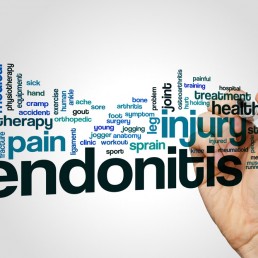TMJ Physio Temporomandibular Joint Disorders (TMD)
The Temporomandibular joints (TMJ) are frequently referred to as the most used joints in the body. So, would it surprise you to learn that TMD is the most commonly occurring chronic musculoskeletal disorder second only to low back pain?
What exactly is TMD?
Temporomandibular disorders or TMD is a collective term given to a range dysfunctional and painful clinical conditions affecting the temporomandibular joints (TMJ), the masticatory muscles and their surrounding anatomical structures.
While the majority of people suffering TMD state their symptoms started gradually over time, or for no apparent reason. Sometimes TMD occur in response to a trauma or specific event.
Bruxism is possibly one of the biggest causes of certain TMD. Bruxism is the action of clenching the jaw. This is often done at night, while concentrating on a task or under stress. Unfortunately bruxism often goes undetected until we start to develop painful or dysfunctional TMD signs and symptoms.
The nature of TMD usually fits in to 1 of 3 groups.
Intra-Articular – These are often inflammatory conditions including disc displacement or internal joint derangement.
Myofascial Pain syndromes – Consisting of muscular and soft tissue issues.
Degenerative Disease – Most commonly Osteoarthritis.
Signs and Symptoms of TMD
Clenching your jaw (Bruxism) or grinding your teeth.
Clicking, Popping or Crunching sounds when opening and closing the mouth.
Pain and stiffness around the jaw, especially when chewing, biting, laughing or yawning.
Facial pain – Around the eyes, sinuses, or teeth.
Ear pain, or a blocked, muffled sensation in the ear canal.
Headaches – Especially tension type headaches around the temples or the forehead.
Difficulty opening the mouth wide with a locking phenomena either limiting opening or preventing closure.
Anxiety and stress.
Neck pain
TMJ Physio Management of TMD
TMJ physio assessment and treatment is a highly skilled and specialised area of physiotherapy clinical practice. Treatments consist of:
Manual Therapy – Includes neuromuscular and joint techniques.
Acupuncture – Using both Traditional Chinese Medicine and a Dry Needling approach
Exercises and behaviour modification drills to strengthen and re-educate movement as well as break bad habits.
The approach here at Life Physiotherapy with Clinical TMJ Specialist Roberto Colombini involves a multidisciplinary approach. Working closely with Oral & Maxillofacial Surgeons, Dentist/Orthodontics and Psychologists. TMJ Physio Roberto is proud and passionate to offer expert assessment and treatment management strategies for those suffering from TMD. He has a deserved reputation for achieving effective, lasting relief from pain. With a proven track record in the restoration of normal mechanical function to the TMJ.











